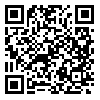Volume 6, Issue 24 (2019)
CFL 2019, 6(24): 173-197 |
Back to browse issues page
Download citation:
BibTeX | RIS | EndNote | Medlars | ProCite | Reference Manager | RefWorks
Send citation to:



BibTeX | RIS | EndNote | Medlars | ProCite | Reference Manager | RefWorks
Send citation to:
Hadi Sormagi R, Soortichi Z. Fidelity and its interaction with power in Abu Moslem's Letter to Tarsawi with the New Historical Approach. CFL 2019; 6 (24) :173-197
URL: http://cfl.modares.ac.ir/article-11-20556-en.html
URL: http://cfl.modares.ac.ir/article-11-20556-en.html
1- University of Tehran
2- tehran , z_soortichi@yahoo.com
2- tehran , z_soortichi@yahoo.com
Abstract: (7405 Views)
Based on the historical personality of Abu Muslim Khorasani, the epics of Abu Muslim Nameh is a narrative prose which has been famous throughout the history of the storytellers. For this reason, many folk tales and beliefs have been emerged. One of these beliefs is Fatalism. The new historicism emphasizes the influence of the text (narrative) on the ontext of society and considers the context as the most important element of each text as power relations, an attempt to power transfer and its realization. Being necessarily linked to a speech or an ideology, the literary text can also be a means of power transfer. By adopting a descriptive –analytical approach, the current research seeks to investigate fatalism discourse and its semiotic universe by referring to cultural and social facts based on Abu Muslim Nameh. The results showed that to believe in fate and destiny and its signs have been under the influence of dominant discursive field. In this fictional field, the narrator attributes all the events, affairs and social facts to fate and destiny. Finally, Abu Muslim Nameh takes the path towards hegemonic discourse and power stability.
Article Type: پژوهشی اصیل |
Subject:
Folklore literature
Received: 2018/05/7 | Accepted: 2018/12/29 | Published: 2019/02/15
Received: 2018/05/7 | Accepted: 2018/12/29 | Published: 2019/02/15
Send email to the article author
| Rights and permissions | |
 |
This work is licensed under a Creative Commons Attribution-NonCommercial 4.0 International License. |







